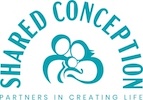Inducing lactation refers to the process of making milk without pregnancy and birth. In a typical breastfeeding situation, the hormones of pregnancy and the changes that these hormones undergo at birth cause a woman’s breasts to start producing milk. When an intended mother doesn’t experience pregnancy and birth because her baby has arrived through surrogacy, she can still produce milk by giving her body messages to produce milk.
How does an intended mother give her body messages to make milk without pregnancy and birth?
Step 1: Prepare Your Breasts for Making Milk
If you want, you can start the process of inducing lactation by preparing your breasts to make milk as would happen during a pregnancy. You can do this with physical techniques such as breast massage, nipple stimulation, or partner suckling. You can also do this with medications, either pharmaceutical or herbal.
Step 2: Start Making Milk before your Baby Arrives
If you wish and there is the lead time, you can start making milk before your baby arrives. Typically this is done by expressing with an electric breast pump many times throughout the day, although some women find hand expression very helpful as well. Medications, either pharmaceutical or herbal, can be also be used to potentially boost the output from pumping or hand expressing.
Step 3: Breastfeeding and Making More Milk
This is the wonderful, amazing point when you can start breastfeeding your baby — whether you are making a significant amount of milk, barely drops, or no milk at all. Many intended mothers will use an at-breast supplementer so that they can breastfeed as much as possible even they are not producing all the milk their baby needs. And, as in Step 2, including pharmaceutical or herbal medications, can help some intended mothers make more milk. Some intended mothers will continue to pump or hand express after or between breastfeeding in order stimulate more milk production.
Methods for Inducing Lactation
Several protocols are available which lay out specific directions for each step. An overview of each are described below (in ascending order of complexity).
Traditional Protocol: This is a very simple protocol based on observations of mothers in developing countries. It simply involves waiting until your baby arrives, and breastfeeding very frequently. Whatever the baby does not get from breastfeeding is supplemented using a cup.
Avery Protocol: The Avery protocol involves manual stimulation of your breasts and nipples to start the process rolling, then breastfeeding with an at-breast supplementer when your baby arrives.
Pumping Protocol: This protocol, unlike those above, makes use of a multi-user breast pump to stimulate the breasts to start making milk before baby arrives. Then, when baby arrives, you begin breastfeeding using an at-breast supplementer as needed.
Herbal Protocol: This protocol resembles the Pumping Protocol with the addition of herbs reputed to build mammary breast tissue or boost hormones responsible for making milk.
Newman-Goldfarb Protocol: This popular protocol for inducing lactation is the most involved of them all. It begins with several months of pharmaceutical medications to simulate the hormonal state of pregnancy. Then the pharmaceutical medications shift simulating birth, and you begin pumping with a multi-user breast pump for several weeks prior to baby’s arrival. Once baby arrives, you begin breastfeeding using an at-breast supplementer as needed.
You can use one of these protocols if you find one that suits you, or use them as a guidelines for creating your own individualized plan. Call us at Shared Conceptions and we will help guide you.
*some content from Alyssa Schnell, MS, IBCLC
